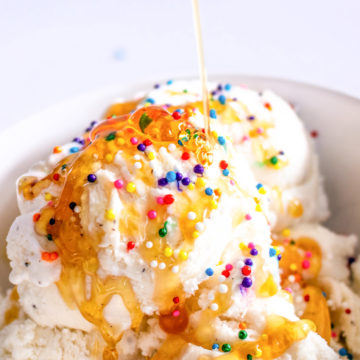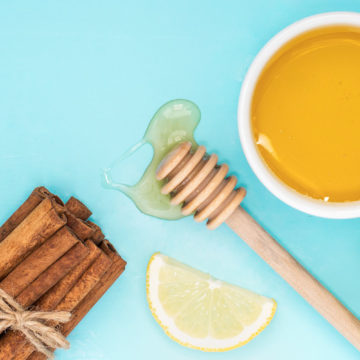Agriculture that Depends on Honeyees
One out of every three bites of food Americans consume comes from a plant pollinated by bees or other pollinators. Economically, it’s estimated that $15 billion crops annually are pollinated in the U.S., with bees doing almost 80% of the work.
Not only does the bee’s pollination result in higher number of fruits, berries or seed, but it also harvests higher quality produce. Efficient pollination from the honeybee also serves as a protection against pests for the crops. Without bees to pollinate, many plants – including food crops – would die off.
So you could say agriculture and honeybees have a critical mutual relationship. Without bees, the global economy would take a huge hit. As it is, the recent decline of honeybees has resulted in lower crop yields and increased production costs.
While we don’t need bees to pollinate every single crop, here is a brief list of some of the foods that are strongly tied to honeybee pollination.
Each year, the U.S. produces about $2.3 billion worth of almond crops. California yields an average of 1.5 billion pounds of nuts per year.
One of the most important crop and honeybee pollination partnership is with California’s almond production. California is responsible for producing 80 percent of the world’s almonds. This crop is entirely dependent on honeybee pollination. Without the bees, there would be no almonds. In order to assist in pollinating the more than 790,000 acres of almonds, about half of the honeybee population in the United States is brought to the California fields. This results in more than a million colonies of honeybees.
 Each year the U.S. produces about $2.7 billion worth of apples. The U.S. is the world’s second largest apple producer. Approximately one out of every four apples grown in the U.S. is exported.
Each year the U.S. produces about $2.7 billion worth of apples. The U.S. is the world’s second largest apple producer. Approximately one out of every four apples grown in the U.S. is exported.
For apples, pollination is the most critical event in their yearly production cycle. Apples begin as flowers on an apple tree. For a flower to transition into an apple, the pollen produced on one apple tree must be transferred to the flower of another tree. It has been found that 97% of the insects visiting these fruit blossoms are honeybees. Without the help from bees, the flowers would bloom and die without a chance to produce an apple.
 The U.S. is the world’s largest market for fresh avocados. California produces about 90% of the nation’s avocado crop.
The U.S. is the world’s largest market for fresh avocados. California produces about 90% of the nation’s avocado crop.
Avocados are a partially self-pollinating crop. However, help from the honeybees have been shown to boost both the yield and quality of avocados. It has been estimated that up 90% of an avocado crop would be lost if there was no bee pollination. Further, a report from the National Agricultural Statistics Service has indicated that 90% of avocados grown in the U.S. rely on honeybees for pollination.
 The value of the nation’s blueberry crop is estimated at more that $593 million.
The value of the nation’s blueberry crop is estimated at more that $593 million.
Blueberry plants are insect-pollinated. The blueberry flower produces both pollen and nectar, with pollen being produced for up to five days. Honeybees visit the blueberry flower to collect both nectar and pollen. Of all the insect pollinator visitors to the blueberry plant, honeybees make up 95%.
 The value of melons in the U.S. is estimated at $75.4 million. The average American consumes about 27 pounds of melons each year.
The value of melons in the U.S. is estimated at $75.4 million. The average American consumes about 27 pounds of melons each year.
Since cantaloupe plants have heavy pollen, insect pollination is necessary. Honeybees visit cantaloupe blossoms for both the pollen and nectar. With increased honeybee pollination, certain varieties of cantaloupe grow in volume, weight and sweetness.
 The production of cherries in the U.S. is valued $767 million. In 2014 the cherry production totaled 363,850 tons.
The production of cherries in the U.S. is valued $767 million. In 2014 the cherry production totaled 363,850 tons.
Cherry crops require cross-pollination to survive and reproduce. The average blossoming period for pollination is about seven to eight days, with several factors that can affect this. Bees transfer pollen within and between the flowers. The more flowers that are pollinated by bees means more cherries on each tree. Cherries that don’t receive adequate pollination fail to develop. Honeybees are responsible for pollinating about 90% of the cherries in the U.S., according to the National Agriculture Statistics Service.
 Each year the U.S. produces about $193 million worth of cucumbers. The U.S. produces about 747 tons of cucumbers a year.
Each year the U.S. produces about $193 million worth of cucumbers. The U.S. produces about 747 tons of cucumbers a year.
Cucumber plants produce both a male and female flowers. The large and sticky pollen must be transferred between the two to create a cucumber. Honeybees have proved to be the most effective pollinators for this job. Multiple visits from honeybees result in properly shaped cucumbers, and a larger crop. More than 40% of flowers that have received one visit from a honeybee will produce a cucumber. Further, multiple bee visits to an individual flower will increase the amount of cucumbers and number of seeds per produce. In a study between screening out insect pollination on cucumber vines and open-pollinated vines, the screened vines produced no fruit while the open vines produced about six fruit per foot.
 California currently produces 90% of the commercially grown kiwifruit in the U.S. In 2014, the state produced almost 28,000 tons of kiwifruit with a value of $32.7 million. – NEED TO HYPERLINK
California currently produces 90% of the commercially grown kiwifruit in the U.S. In 2014, the state produced almost 28,000 tons of kiwifruit with a value of $32.7 million. – NEED TO HYPERLINK
Kiwifruit flowers depend on insect pollination. The male and female flowers are located on separate flowers on different plants. The insects need to collect pollen from the male flowers and carry it to the female flower for pollination to occur. Honeybees have long been the top insect pollinator for this job. A single bee visit increases the fruit weight and seed count.
 The U.S. is the world’s third-largest producer of raspberries. In 2014 the U.S. produced 173.85 million pounds of red raspberries, resulting in a $175 million revenue.
The U.S. is the world’s third-largest producer of raspberries. In 2014 the U.S. produced 173.85 million pounds of red raspberries, resulting in a $175 million revenue.
Raspberry flowers are partially self-fertile. The plant can produce some fruit without bee pollination. However, honeybees produce more and bulkier berries through pollination. Bee pollination also results in fully formed fruits, avoiding deformities. The raspberry flowers are typically very attractive to bees because of the large amount of nectar. Because of this, bees don’t have to visit as many flowers to effectively pollinate.
 The value of squash, pumpkin and gourds in the U.S. is estimated at $237.1 million.
The value of squash, pumpkin and gourds in the U.S. is estimated at $237.1 million.
Honeybees are the most important pollinators for squash, pumpkin and gourds. These plants produce separate male and female flowers for pollination, with the number of males outweighing the females to help ensure successful pollination. When bees pollinate these plants, the number and weight of fruit produced increases.
 The value of strawberry crops in the U.S. is estimated at $2.9 billion. Every year the U.S. produces more than 3 billion pounds of strawberries.
The value of strawberry crops in the U.S. is estimated at $2.9 billion. Every year the U.S. produces more than 3 billion pounds of strawberries.
Strawberry flowers are hermaphrodites. However, pollination from honeybees results in greater outcomes. Pollination by insects increases the quality and shelf life, saving hundreds of millions of dollars in the process. Strawberries pollinated by bees are more vibrantly colorful than other berries and have fewer deformities. Because they are firmer, their shelf life is about 12 hours longer than those that were wind-pollinated. If pollinators weren’t involved, growers would lose 11% of the fruit’s value, which would have cost the U.S. farmer $264 million in 2011 from spoilage. Honeybee pollination has also led to 39% higher sales value than wind-pollinated berries.
 Watermelon is one of the top three crops produced in the U.S. In 2014 the U.S. produced 3.2 billion pounds of watermelon.
Watermelon is one of the top three crops produced in the U.S. In 2014 the U.S. produced 3.2 billion pounds of watermelon.
Watermelon’s pollen is sticky and can’t be blown by the wind, so insect pollination is critical. Each watermelon plant has a separate male and female flower that opens immediately in the morning and closes early in the afternoon, making initial morning bee activity very important. Bees need to visit an individual flower eight times to help produce a well-shaped, large fruit.
Besides these few agricultural crops listed above, the honeybee also has an important role in pollinating native plants that serve as habitat and food sources for our wildlife across the nation. Some of the food used to feed livestock must also by pollinated be bees. All in all, honeybees are essential to our agriculture which is why Sue Bee® honey supports the USA Honeybee.




